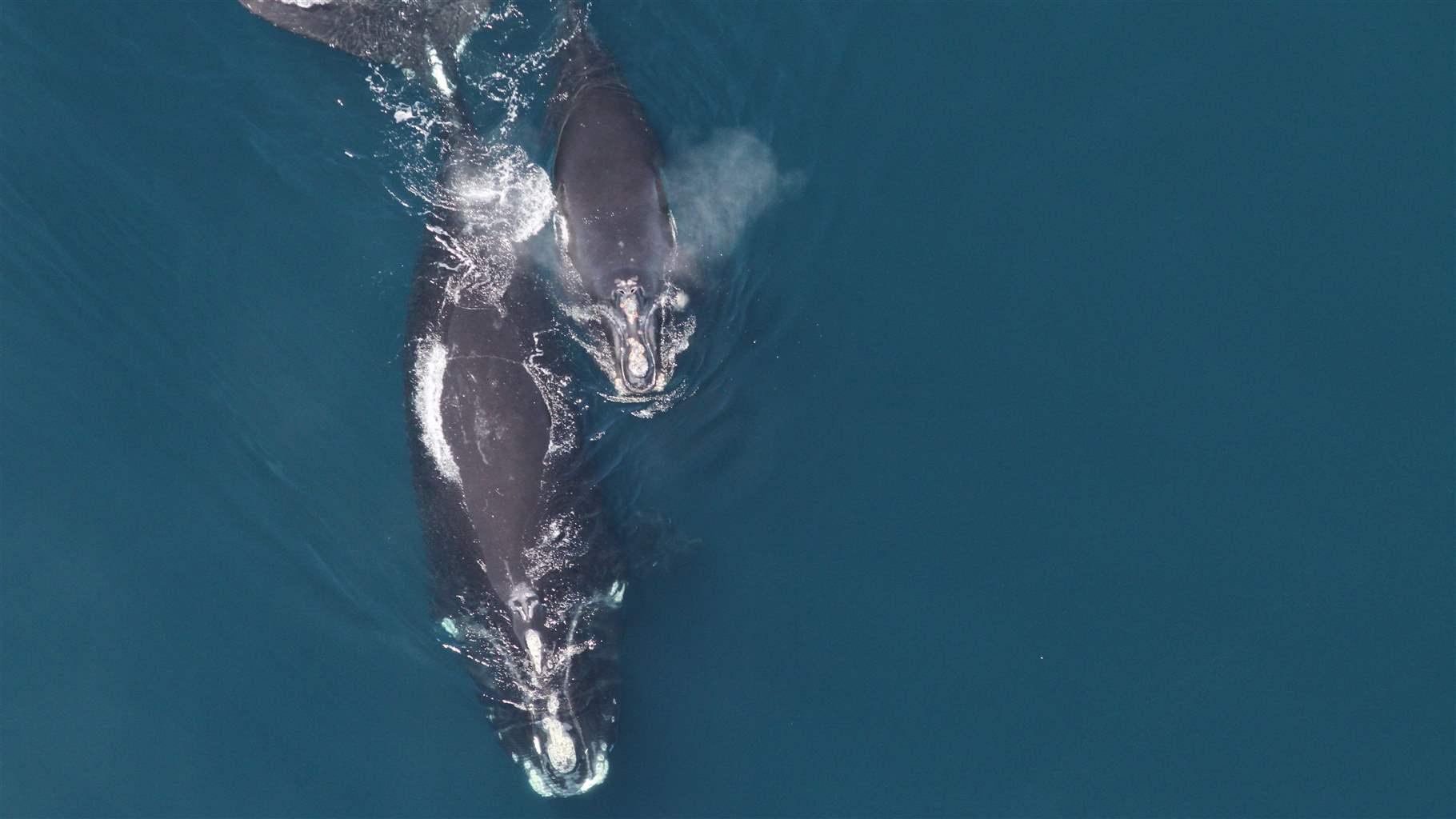New Research Asks if Food Availability is Causing Range Shift in Right Whales
North Atlantic right whales are among the most endangered marine species, with fewer than 500 individuals remaining. In the last few years, the species seems to have shifted northward in summer. There has also recently been an unprecedented number of right whale deaths in Canada’s Gulf of St. Lawrence, an area where right whale sightings had previously been rare.
Officials in both the U.S. and Canada would like to know what is causing the range shift so they can anticipate future right whale appearances. One hypothesis for the northward movement is that the whales are following changes in the distribution of their main prey species, the planktonic copepod Calanus finmarchicus because of rapid warming in the Gulf of Maine. Plankton samples exist to help evaluate this hypothesis, but they have not been analyzed. The Lenfest Ocean Program is supporting Dr. Charles Greene of Cornell University and colleagues to conduct the analysis and determine whether right whales are moving in response to their prey.
A surprising shift, a lack of data
The right whale shift northward was first detected in 2015, completely surprising most scientists and managers. Their concerns intensified in 2017, when 12 right whale deaths were recorded in the Gulf of St. Lawrence in July and August. Not all the deaths could be attributed to a cause, but those that could were due to ship strikes or entanglement in fishing gear. The 2017 mortality rate far exceeded scientists’ estimates of what the population can sustain and prompted concerns that the region is not prepared for a continued influx of right whales.
Accurate predictions of right whales’ locations could help regulators select measures to reduce deaths while minimizing economic impacts on the fishing and shipping industries. However, such predictions are currently difficult, in part because the underlying cause of the shift is unclear. Furthermore, data on right whales and their food sources are scarce in the Gulf of St. Lawrence and some other regions of Canada.
What scientists do know is that the fate of right whales is tied closely to a single species of prey, the copepod C. finmarchicus. Over 20 years of research, Dr. Greene and his colleagues have shown that right whale reproduction varies greatly from decade to decade depending on the abundance of this species in the Gulf of Maine. C. finmarchicus is at the southern edge of its range in this region, suggesting its distribution would shift northward in response to the intense heat wave that began there in 2012. This prompted the hypothesis that the northward movement of right whales occurred because they were following their food.
The study: Linking movements to prey
To test this hypothesis and better understand how food availability may lead to right whale migration, Dr. Greene and his research team will first analyze samples collected with an instrument called a continuous plankton recorder, or CPR. This instrument was used to collect plankton from the Gulf of Maine every month from 1961 to 2017, but the samples from 2010 to 2017 have not been analyzed due to budget constraints.
Once data from the CPR samples are in hand, the research team will add them to an existing mathematical model that uses prey abundance to explain variation in right whale reproductive success.
The team will also use the model to generate hypotheses about when right whales might abandon their traditional feeding grounds and where they might end up. For example, when prey abundances fall below thresholds that ensure reproductive success, the whales might move northward until they find adequate food. The team can then test whether this hypothesis is supported by shorter-term datasets from the Bay of Fundy, southwest Nova Scotia, and Gulf of St. Lawrence.
The project will continue through 2020. In addition to peer-reviewed papers, the researchers will produce guidance for Canadian managers on, among other things, where to conduct future surveys for right whales and plankton.
Research team
Dr. Charles Greene
Ocean Visions and Professor
Cornell University
Dr. Erin Meyer-Gutbrod
Assistant Professor
University of South Carolina
Dr. Kimberley Davies
Associate Professor
University of New Brunswick
David Johns
Laboratory Manager and Research Scientist
Head of the Continuous Plankton Recorder Survey
Marine Biological Association
Contact
For any questions, please contact Emily Knight, Manager, Lenfest Ocean Program, at [email protected]. To learn more about this research and stay up to date on our latest projects, follow us on Twitter @lenfestocean or sign up for our newsletter at lenfestocean.org.




